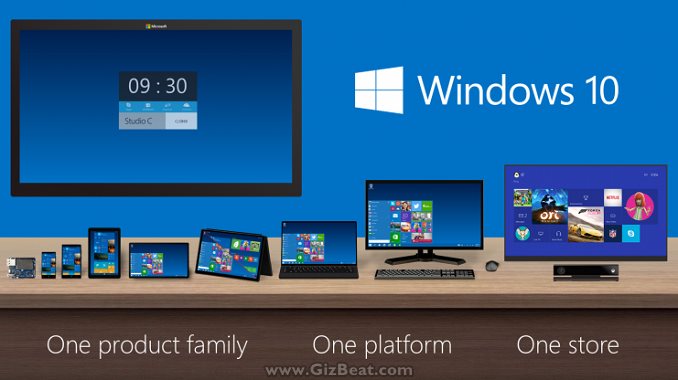Windows has teamed with Qualcomm to give us full Windows 10 on ARM based SoCs.

Will it be full Windows 10?
Yes. This will be a full version of Windows 10. Windows RT, which was on the first Microsoft Surface was not a very successful OS. It could only run a subset of Windows apps and many users were left less than happy.
According to Qualcomm: Users will get “full Windows experience” and its upcoming SoC will carry full support for UWP apps and Win32 software.
Windows 10 for ARM:
- Will run any x86 Win32 software
- No modification or compiling of apps required
- Apps will not be sandboxed and will have full access to the OS
- Will run all Universal Windows Platform apps (UDP)
Will Windows 10 for ARM run on any ARM SoC?
Sorry MTK fans. At this point it is Qualcomm only. The ARM CPUs and the SoCs they run on are much more varied than x86, so at the beginning it will be Qualcomm running the show. That doesn’t mean that other ARM SoC won’t be made compatible in the future.
Windows 10 running full Photoshop and World of Tanks MMO:
https://youtu.be/A_GlGglbu1U
Why is this awesome?
Software — We gain the ecosystem of Windows software on all mobile devices. For anyone who prefers PC gaming and PC software to Android, this is a fantastic development.
Windows Surface phones — Already slated for release, there will be phones running full Windows 10 with Qualcomm SoCs. It will be like a powerful, tiny Android box that can be connected to any display, and it will be connected to your SIM network for normal calls as well.
Cellular PCs — Much in the way your phone works now, you gain SIM-based benefits on Windows 10 notebooks, tablets, ultrabooks and hybrids, enabling you to make phone calls and texts through your cellular networks.
Modern architecture — ARM is a much more recent CPU architecture. It runs cooler and requires less power to gain the same performance as Intel x86.

Quick-charging — QC 3.0 is great, allowing users to charge their phones to 50% in about half an hour, but Quick Charge 4.0 is coming and the promise of this technology is that we will be able to charge a typical 2500mAh battery to 50% in 15 minutes. For those power users and those on the go this is huge.
eSIM — You’ve lost your SIM, or you want to change carriers. You’re forced to go to the shops, or wait for a new SIM to arrive. With eSIM, this problem is gone.
- Through eSIM Windows apps, you will have full control of your SIM carrier. Changing carriers will be no problem.
- There’s no SIM to lose.
- You can easily have multiple carriers on a single system
- eSIM can be shared and synced between any devices with eSIM capabilities
- AT&T, Etisalat, Deutsche Telekom, Orange, Vodafone, and Telefonica are some of the examples of carriers that are already working with eSIM tech
Gigabit LTE — Upcoming Qualcomm SoC will carry Gigabit LTE capability.
Smaller, thinner, lighter — ARM SoC have been engineered from the beginning to work in tiny, enclosed environments. This gives manufacturers more liberty in system design; enabling OEMs to make our mobile devices smaller and fanless.
System on Chip (SoC) — While Intel SoC generally only carry a CPU and GPU, ARM SoC generally carry most everything needed on a single chip, or are otherwise made to work with in-house solutions. The radios, modems, GPS, CPU, compass, and GPU are all there on one piece and manufactured to work seemlessly with each other.
Cristiano Amon, Executive Vice President of Qualcomm Technologies and president of Qualcomm CDMA technologies says:
“Qualcomm Snapdragon processors offer one of the world’s most advanced mobile computing features, including Gigabit LTE connectivity, advanced multimedia support, machine learning and superior hardware security features, all while supporting thin, fan-less designs and long battery life, With compatibility with the Windows 10 ecosystem, the Qualcomm Snapdragon platform is expected to support mobility to cloud computing and redefine how people will use their compute devices,”
Snapdragon 835
Though the demo in the video is done with Snapdragon 820, and we may see Windows 10 Snapdragon 82x devices. From the sound of things, Snapdragon 835 will be the star of the Windows 10 show.
- 10nm FinFET
- Are already in production
- Will be seen in devices as early as Q1 2017 (Android)
- 27% higher perfomance than Snap 820/821
- Use 40% less power than 14nm 820/821

When will Windows 10 ARM devices be coming?
No date has been set, with Microsoft dropping only that it will come [sometime in 2017]. Experts estimate the arrival sometime in Q3 2017.
Versions currently planned for ARM Windows 10 are Enterprise and Consumer.
Intel
Clearly this is a huge move for ARM, Qualcomm, and Windows. And, consumers should rejoice at the prospect of the union.
But, somebody’s got to be left out. Microsoft’s partnership with ARM, the recent announcement that Intel has been forced to carry AMD GPU tech in their GPUs to remain relevant, and AMD’s huge Zen CPU and APU release looming, Intel has got to be wondering which direction to turn now.

Leave a Reply